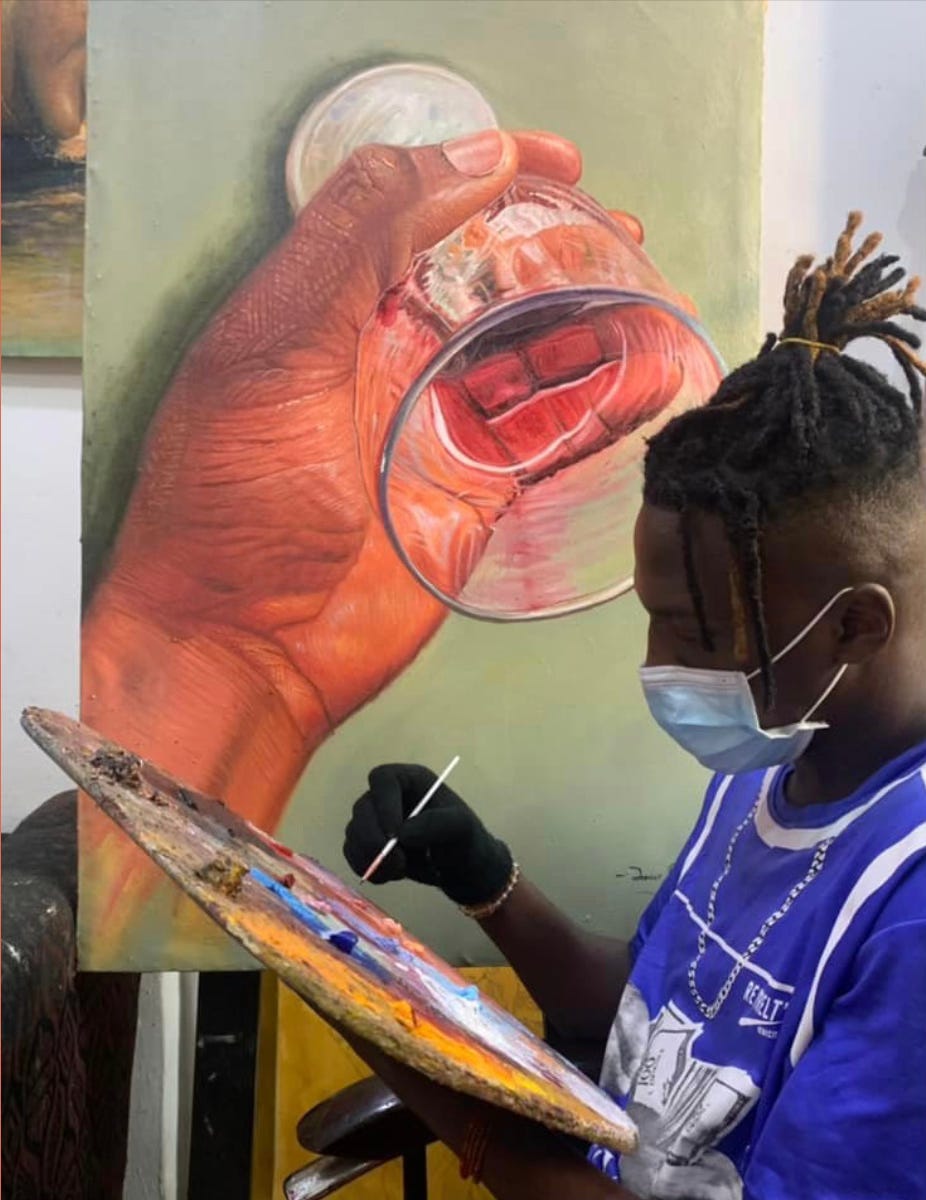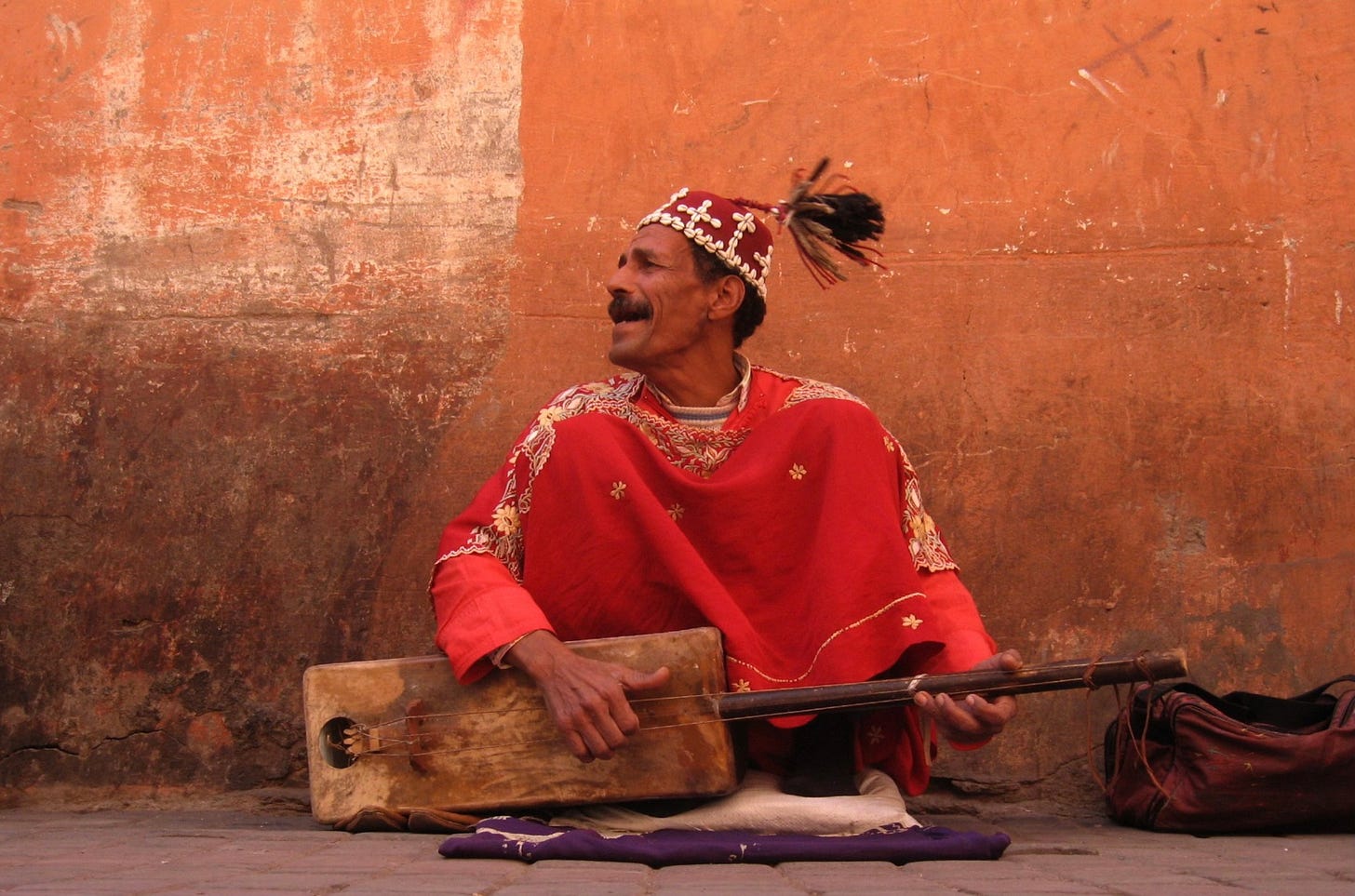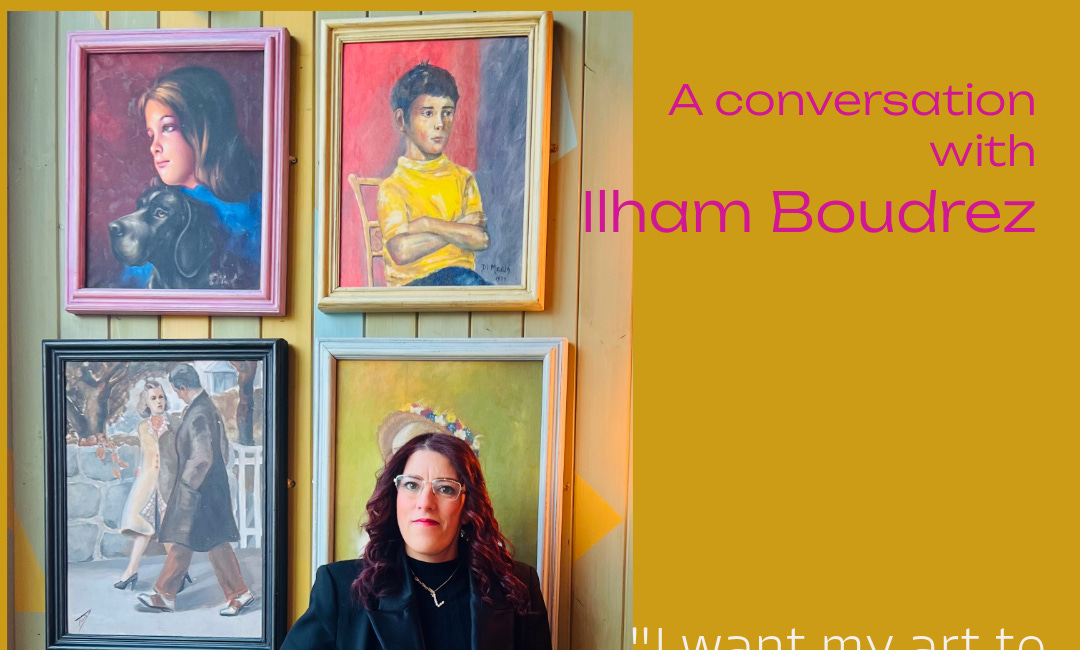Listening to the Sea: The Unfinished Line of Lalla Mira
Essaouira.
The pulse of the guembri.
The iron clatter of qraqeb.
Voices from a nearby market.
I am thinking of that place I once visited.
Morocco is a country of colours. The sun there doesn’t let anything stay pale for long.
The deep red of Marrakech walls, the cobalt blue of Chefchaouen’s alleys, the golden dunes of Merzouga... Yet beneath this brightness, there are dark stories, whispers carried on the wind from the riads, from the sea.
For centuries, Essaouira — once called Mogador — was a place of crossings: Amazigh, Arab, Jewish, Sub-Saharan. A city of trade and trance, where merchants and mystics met at the shore. The Black Atlantic found its echo here. Slaves from the south arrived through caravan routes, but so did rhythms, rituals. The Gnawa — descendants of enslaved West Africans — made this coast their spiritual home.
For years, French colonial ethnographers brought their “blackness” north, along with trancing and blood sacrifice.
Even the music was made to serve a colonial logic of difference. The guembri, a deep, rectangular lute, was called a relic of slavery — an “African bass” that somehow travelled northward.
Yet, as modern ethnomusicologists like Tim Fuson note, its tone and shape may just as easily link it to ancient Egypt. Cultures, like rivers, flow both ways.
The French believed they were documenting Morocco, but in truth they were designing it — dividing its people by colour and creed, encouraging the “local” and “primitive” to keep the Arab reformist East at bay. They even revived the image of the Black Guard from the days of Moulay Ismail (an elite army unit created by the Sultan of Morocco in the late 17th and early 18th centuries, composed of enslaved people of sub-Saharan African descent. This army was a crucial part of his power and military strength, responsible for internal security and external expansion), building a spectacle of history to reassure themselves of power.
And yet, beyond their pages and their maps, the music kept playing.
Moroccan poet Mohammed Khaïr-Eddine once wrote:
“The wind carries us back to our origins,
but we no longer know which desert to claim.”
There is a legend from that country — the story of Lalla Mira.
She was born centuries ago in a small fishing village between Essaouira and Sidi Kaouki. From childhood, she was drawn to the sea. She spent long hours at the water’s edge, listening. When storms came, she was seen walking along the rocks, her white robe luminous against the darkening sky.
The fishermen believed she prayed for them — that her whispered words calmed the waters. Some said they saw her lift her hands, and the wind would soften; the waves would sink back. When boats disappeared, she would appear in dreams, guiding lost sailors home.
After her death, no one found her body. Only her footprints remained in the sand, and when the tide rose, they did not wash away. The people built a small shrine by the sea — a white dome, half hidden by dunes. To this day, some women go there to light candles and leave offerings: salt, shells, or a piece of white cloth. They ask for her intercession in times of illness, grief, or uncertainty.
They call her Lalla, a title of reverence for holy women — and they say her spirit walks the coast whenever a storm brews.
But there is another version of the same story.
They say that before she was known as Lalla Mira, she was Mira bint Ahmed, a poet and a singer. She came from a family of fishermen, but unlike the women of her village, she refused to stay within the walls of her home. She wandered. She listened.
She believed that every wave carried the remnants of human speech — lost poems, prayers, or cries — fragments swallowed by time. Some thought she was possessed by a jinn. But the old women said she was listening to what others had forgotten. Then one evening, during a great storm, Mira vanished. The next morning, fishermen found her white shawl tangled in the rocks, but no trace of her body. The sea had taken her, they said, because she had learned too much.
The legend of Lalla Mira carries echoes of Morocco’s maraboutic tradition — the cult of local saints, many of them women, who embody the meeting of the sacred and the everyday. She belongs to the same lineage as Lalla Aïcha, Lalla Rachida, and Lalla Takerkoust: women who became both myth and mirror, protecting their communities and expressing the deep feminine spirituality. In the poetic imagination of Essaouira, she became a figure of the unfinished poem, the eternal line carried by the sea. Artists in the city — painters, singers, poets — sometimes invoke her as a muse. Her name is written in graffiti near the port, on the wall where the wind cuts through: “Lalla Mira écoute encore.” — Lalla Mira still listens.
From the qasidas of the Gnawa, to the izlan of the High Atlas — the old Amazigh love songs passed down from mothers to daughters — much of Moroccan verse is a dialogue with the earth, the wind, the sea.
Even now, locals claim, if you stand by the rocks near Sidi Kaouki (to the south from Essaouira) at dusk, you might hear her voice carried by the wind — an unfinished line, always cut short by the breaking waves.
Lalla Mira, the listener.
The poet Mohammed Bennis once wrote that the sea returns our questions without answers, and yet we continue asking.
Lalla Mira’s legend is to me that kind of question — the kind that stays open. Her story suggests that not all art must be visible. Some of it is heard and carried, not signed or owned. It belongs to anyone who pauses long enough to receive it.
Some extras:
The poem ‘Aubade’ by the Moroccan poet Mohammed Bennis:
In this time of hardship, truth bickered over by despots,
with the water of love shall I wash the soul
clean of all profanity
So welcome, glass of ruby-jewelled wine!
From this glass will I drink in praise of love
night after night will I faithfully strive
to praise those amongst the host of poets
who sang for the land – as it once was and ever shall be –
the poets’ mother country
I, the drunk –
I see the wondrous unknown shining
on a silence that cocks its head and beckons
In the spaces between us, infinity opens
This my faith, this my happiness
The painting by the Nigerian artist Ogamba James Diving Wine From Most High:

The interview with the Moroccan artist Ilham Boudrez:
Unobvious Interpretation of Feelings Through Colours: A Conversation with ILHAM BOUDREZ
Based in North-West England, Ilham Boudrez, a Moroccan artist, painter, and special effect artist, discusses the Power of Art in her work and life. In this conversation, she honestly delves into her roots to convey a message of female strength.




